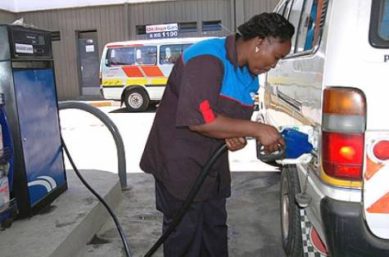National Issues
Petrol And Nigeria’s Unanswered Questions -By Kunle Durojaiye

We live in a time where information is readily available to help both businesses and individuals plan and make good decisions. Yet, in 2015, Nigeria still struggles with primary data and statistics to enable proper national planning. Almost 3 decades since oil was first discovered, the opacity within the industry is appalling. Nobody seems to know how much oil is produced per day at each wellhead, the volume of oil stocked at each refinery on a daily basis or the inventory is held at the refineries hold on a going basis. It is not surprising that a popular joke around suggests the Nigeria National Petroleum Corporation (NNPC) does not even know how many bank accounts it operates!
How Much Petrol Do We Consume?
In its November 2011 report on “The real cost of subsidy and tax implications, PWC estimated our daily consumption as 32 million liters. According to Punch in October 2012, demand was 40.32 million liters per day. The Journal of Petroleum and Gas Engineering in November 2013 puts this figure at 30 million liters per day. In the same month, November 2013, an online news platform, published national daily consumption as 39.66 million liters, quoting the immediate past Minister of Petroleum. September 2014, another online news platform reported daily consumption as 40 million liters per day. February 2015, The Nigerian Guardian reported same national metric as 40 million liters per day. This is probably why the current public impression is somewhere between 30 and 40 million liters per day. What is the basis for these figures? Is there any clear statistical method to support this? If we are unable to accurately estimate daily demand, how do we know what quantity of petrol to import? It seems Nigeria does not know how much petrol it consumes, but like our former President once said, maybe America will know… or perchance the Nigerian Bureau of Statistics might help. In May 2015, the NBS initiated plans to conduct a survey on domestic supply and demand for petroleum products. Hopefully, when this survey is completed, we will have clarity on how much petrol Nigeria consumes. While we anticipate, let’s see whether the NNPC can help a bit.
The NNPC actually logs some data on supply and distribution of petroleum products but the reports are often delayed (most recent is March 2015, published July 2015) and carry a huge disclaimer: “Although NNPC endeavors to ensure accuracy of information in these documents, it cannot guarantee 100% accuracy nor can it be held liable for errors that may occur. Users are to note that use of any information herein is purely at their discretion.”
A review of 2014 product distribution data shows that 4,375.7 million liters of PMS were distributed across the 36 States and Federal Capital Territory by the NNPC, Major marketers and Independent Marketers. “Disclaimer: Product distribution data was not received from majors like Forte Oil, MRS Etc. at the time of the report”. 544.2 million liters of Household Kerosene (HHK) and 416. 3 million liters of Automotive Gas Oil (AGO) were distributed nationwide through the year. This puts the average monthly distribution for 2014 at 364.6 million, 45.3 million and 34.6 million liters of PMS, HHK and AGO respectively. 2014 daily distribution extracted from same data yields 12.2 million, 1.5 million and 1.2 million liters of PMS, HHK and AGO respectively.
In 2014, the FCT, Delta and Lagos States received the largest volume supplies of PMS from NNPC distribution. 2014 volumes distributed by Independent and Major Marketers are not broken down by State.
2015 daily distribution (January through March) as extracted was 12.6 million, 1.0 million and 0.6 million liters of PMS, HHK and AGO respectively.
A consistent trend observed from the NNPC reports is the average daily distribution of PMS. From 2014 through 2015 March, the data shows an average of 12.3 million liters of PMS distributed for consumption per day. If we double this to cater for disclaimers (non-available data from some oil majors) and unknowns, it results in a worst case estimate in the range of 25 million liters of PMS per day.
This raises some important questions around the difference in consumption. Does Nigeria consume 25 million liters per day or 40 million liters? How much of this is consumed locally and what percentage is smuggled to neighboring countries where petrol sells for at least N140 per liter? In a period where fuel subsidy costs exceed our capital expenditure, it is important to understand how much wastage can be cut from budgets. For this to happen, the NBS needs to be properly funded to undertake the necessary research and data gathering needed to capture local information and aid national planning.
Kunle Durojaiye
Twitter: @kunledee
Source: NNPC CP & S MPI Extracted Data Tables


















